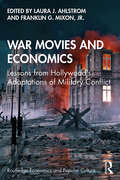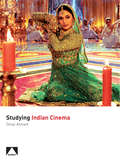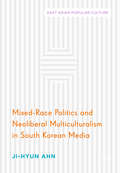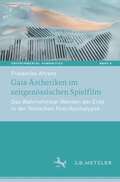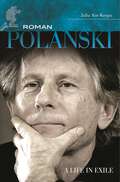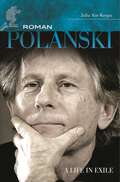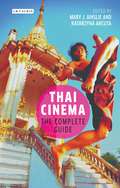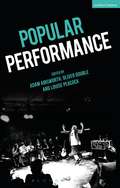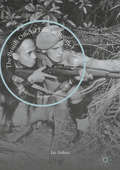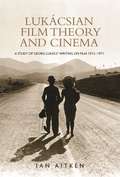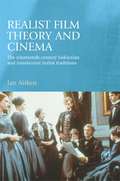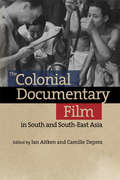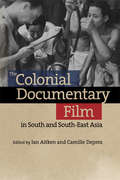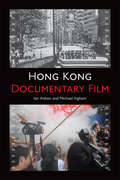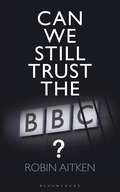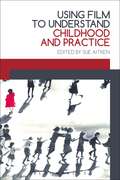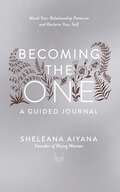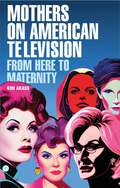- Table View
- List View
War Movies and Economics: Lessons from Hollywood’s Adaptations of Military Conflict (Routledge Economics and Popular Culture Series)
by Laura J. AhlstromWar Movies and Economics: Lessons from Hollywood’s Adaptations of Military Conflict applies ongoing research in the relatively new genre of economics in popular media to Hollywood’s war movies. Whether inadvertently or purposefully, these movies provide numerous examples of how economic principles often play an important role in military conflict. The authors of the chapters included in this edited collection work to illustrate economics lessons portrayed in adaptations such as Band of Brothers, Conspiracy, The Dirty Dozen, Dunkirk, Memphis Belle, Saving Private Ryan, Schindler’s List, Spartacus, Stalag 17, and Valkyrie. Aspects of these stories show how key economic principles of scarcity, limited resources, and incentives play important roles in military conflict. The movies also provide an avenue for discussion of the economics of public goods provision, the modern economic theory of bureaucracy, and various game-theoretic concepts such as strategic moves and commitment devices. Where applicable, lessons from closely related fields such as management are also provided. This book is ideal reading for students of economics looking for an approachable route to understanding basic principles of economics and game theory. It is also accessible to amateur and professional historians, and any reader interested in popular culture as it relates to television, movies, and military history.
War Movies and Economics: Lessons from Hollywood’s Adaptations of Military Conflict (Routledge Economics and Popular Culture Series)
by Laura J. Ahlstrom Franklin G. Mixon Jr.War Movies and Economics: Lessons from Hollywood’s Adaptations of Military Conflict applies ongoing research in the relatively new genre of economics in popular media to Hollywood’s war movies. Whether inadvertently or purposefully, these movies provide numerous examples of how economic principles often play an important role in military conflict. The authors of the chapters included in this edited collection work to illustrate economics lessons portrayed in adaptations such as Band of Brothers, Conspiracy, The Dirty Dozen, Dunkirk, Memphis Belle, Saving Private Ryan, Schindler’s List, Spartacus, Stalag 17, and Valkyrie. Aspects of these stories show how key economic principles of scarcity, limited resources, and incentives play important roles in military conflict. The movies also provide an avenue for discussion of the economics of public goods provision, the modern economic theory of bureaucracy, and various game-theoretic concepts such as strategic moves and commitment devices. Where applicable, lessons from closely related fields such as management are also provided. This book is ideal reading for students of economics looking for an approachable route to understanding basic principles of economics and game theory. It is also accessible to amateur and professional historians, and any reader interested in popular culture as it relates to television, movies, and military history.
Studying Indian Cinema (Auteur)
by Omar AhmedThis book traces the historical evolution of Indian cinema through a number of key decades. The book is made up of 14 chapters with each chapter focusing on one key film, the chosen films analysed in their wider social, political and historical context whilst a concerted engagement with various ideological strands that underpin each film is also evident. In addition to exploring the films in their wider contexts, the author analyses selected sequences through the conceptual framework common to both film and media studies. This includes a consideration of narrative, genre, representation, audience and mise-en-scene. The case studies run chronologically from Awaara (The Vagabond, 1951) to The Elements Trilogy: Water (2005) and include films by such key figures as Satyajit Ray (The Lonely Wife), Ritwick Ghatak (Cloud Capped Star), Yash Chopra (The Wall) and Mira Nair (Salaam Bombay!).
Studying Indian Cinema (Auteur)
by Omar AhmedThis book traces the historical evolution of Indian cinema through a number of key decades. The book is made up of 14 chapters with each chapter focusing on one key film, the chosen films analysed in their wider social, political and historical context whilst a concerted engagement with various ideological strands that underpin each film is also evident. In addition to exploring the films in their wider contexts, the author analyses selected sequences through the conceptual framework common to both film and media studies. This includes a consideration of narrative, genre, representation, audience and mise-en-scene. The case studies run chronologically from Awaara (The Vagabond, 1951) to The Elements Trilogy: Water (2005) and include films by such key figures as Satyajit Ray (The Lonely Wife), Ritwick Ghatak (Cloud Capped Star), Yash Chopra (The Wall) and Mira Nair (Salaam Bombay!).
Mixed-Race Politics and Neoliberal Multiculturalism in South Korean Media
by Ji-Hyun AhnThis book studies how the increase of visual representation of mixed-race Koreans formulates a particular racial project in contemporary South Korean media. It explores the moments of ruptures and disjuncture that biracial bodies bring to the formation of neoliberal multiculturalism, a South Korean national racial project that re-aligns racial lines under the nation’s neoliberal transformation. Specifically, Ji-Hyun Ahn examines four televised racial moments that demonstrate particular aspects of neoliberal multiculturalism by demanding distinct ways of re-imagining what it means to be Korean in the contemporary era of globalization. Taking a critical media/cultural studies approach, Ahn engages with materials from archives, the popular press, policy documents, television commercials, and television programs as an inter-textual network that actively negotiates and formulates a new racialized national identity. In doing so, the book provides a rich analysis of the ongoing struggle over racial reconfiguration in South Korean popular media, advancing an emerging scholarly discussion on race as a leading factor of social change in South Korea.
Mixed-Race Politics and Neoliberal Multiculturalism in South Korean Media
by Ji-Hyun AhnThis book studies how the increase of visual representation of mixed-race Koreans formulates a particular racial project in contemporary South Korean media. It explores the moments of ruptures and disjuncture that biracial bodies bring to the formation of neoliberal multiculturalism, a South Korean national racial project that re-aligns racial lines under the nation’s neoliberal transformation. Specifically, Ji-Hyun Ahn examines four televised racial moments that demonstrate particular aspects of neoliberal multiculturalism by demanding distinct ways of re-imagining what it means to be Korean in the contemporary era of globalization. Taking a critical media/cultural studies approach, Ahn engages with materials from archives, the popular press, policy documents, television commercials, and television programs as an inter-textual network that actively negotiates and formulates a new racialized national identity. In doing so, the book provides a rich analysis of the ongoing struggle over racial reconfiguration in South Korean popular media, advancing an emerging scholarly discussion on race as a leading factor of social change in South Korea.
Gaia-Ästhetiken im zeitgenössischen Spielfilm: Das Wahrnehmbar-Werden der Erde in der filmischen Post/Apokalypse (Environmental Humanities #4)
by Friederike AhrensGaia-Ästhetiken entwerfen Figurationen der Erde und ihrer Lebensformen, welche die Menschen dezentrieren und den Fokus auf die Verbindungen zwischen Lebewesen untereinander und dem Unbelebten richten. Diese Ästhetiken sind der Gaia-Theorie entlehnt. In den 1970er Jahren bei der NASA entwickelt, wird sie von Bruno Latour und Isabelle Stengers in den Kontext des Anthropozäns gesetzt. Die Erde als Gaia ist eine mehr-als-menschliche Assemblage, in der die Menschen Knotenpunkte der Verantwortlichkeit darstellen. Filmische Ästhetiken können diese Knotenpunkte wahrnehmbar werden lassen, wie die Spielfilme I Am Legend (2007) und Planet of the Apes (2011-2017) zeigen. Die Filme präsentieren ihren Zuschauer_innen eine Welt in der Post/Apokalypse, in der die Filmfiguren mit dem Eindringen Gaias konfrontiert sind. Sie werden in der Post/Apokalypse kompostiert: Viren dringen in ihre Körper ein, zersetzen ihre Menschlichkeit und lassen sie zum Teil des mehr-als-menschlichen Gaia-Komposts werden.
Roman Polanski: A Life in Exile (Modern Filmmakers)
by Julia Ain-KrupaThis book offers an examination of the films of Roman Polanski, focusing on the impact that his life as an exile has had upon his work.Roman Polanski: A Life in Exile is a revealing look at this acclaimed filmmaker whose life in exile seems to have made his films all the more personal and powerful. Written by a film critic, this insightful book follows Polanski's story from his childhood in a World War II Jewish ghetto to his early films in Poland; from his American breakout, Rosemary's Baby, to his wife's murder by the Manson family; from the spectacular return of Chinatown, to his exile as a convicted sex criminal, to the monumental career peak, The Pianist. The Holocaust, the oppression of communism, the shattering of the swinging 60s, the decadence of Hollywood, the life of a fugitive—Polanski experienced all of these firsthand, and understanding those experiences provides a fascinating pathway through his work.
Roman Polanski: A Life in Exile (Modern Filmmakers)
by Julia Ain-KrupaThis book offers an examination of the films of Roman Polanski, focusing on the impact that his life as an exile has had upon his work.Roman Polanski: A Life in Exile is a revealing look at this acclaimed filmmaker whose life in exile seems to have made his films all the more personal and powerful. Written by a film critic, this insightful book follows Polanski's story from his childhood in a World War II Jewish ghetto to his early films in Poland; from his American breakout, Rosemary's Baby, to his wife's murder by the Manson family; from the spectacular return of Chinatown, to his exile as a convicted sex criminal, to the monumental career peak, The Pianist. The Holocaust, the oppression of communism, the shattering of the swinging 60s, the decadence of Hollywood, the life of a fugitive—Polanski experienced all of these firsthand, and understanding those experiences provides a fascinating pathway through his work.
Thai Cinema: The Complete Guide (Tauris World Cinema Ser.)
by Mary J. Ainslie Katarzyna AncutaOne of the fastest growing and most internationally renowned cinemas in Southeast Asia is that of Thailand. In the first ever book devoted solely to this major centre of creative filmmaking, experts on contemporary and historic Thai film provide a timely overview and discussion of key films, directors and current movements in the region in a comprehensive encyclopaedia format. What many critics, analysts and scholars have retrospectively christened `New Thai Cinema' began to take shape in the late 1990s when national film moved away from its position as lower-class and provincial entertainment and became a firm fixture in Bangkok multiplexes and festivals worldwide. This book will provide information on the influential figures behind the films - up to and succeeding the 1997 watershed film Dang Bireley's and Young Gangsters that began the breakaway movement - as well as detailing and explaining the traditions of popular and art-house genres specific to Thailand. Featuring contributions on Thai visionaries such as Apichatpong Weerasethakul and Wisit Sasanatieng and providing rare insight into early Thai cinema, this is an essential scholarly guide to a vibrant aspect of Southeast Asian cinema - its history, industry and aesthetic trends - for scholars and students alike.
Popular Performance
by Adam Ainsworth Oliver Double Louise PeacockThere is no fourth wall in popular performance. The show is firmly rooted in the here and now, and the performers address the audience directly, while the audience answer back with laughter, applause or heckling. Performer and role are interlaced, so that we are left uncertain about just how the persona we see onstage might relate to the private person who presents it to us. Popular Performance defines and surveys varieties of performance where the main purpose is to entertain, and where there is no shame in being trivial, frivolous or nonsensical as long as people go home happy at the end of the show. Contributions by new and established scholars focus particularly on how it is made, explaining the techniques of performance and production that make it so appealing to audiences. With sections examining how popular performance works in a range of historical and contemporary examples, readers will gain insights into:* performance forms associated with the variety tradition: music hall, vaudeville, cabaret, variety* performance forms associated with circus: wild west shows, clowning* issues relating to the identity of the performer in relation to magic, burlesque, pantomime in contemporary performance* issues relating to venue and audience in relation to contemporary street theatre, stand-up, and live sketch comedy.
Popular Performance
by Adam Ainsworth Oliver Double Louise PeacockThere is no fourth wall in popular performance. The show is firmly rooted in the here and now, and the performers address the audience directly, while the audience answer back with laughter, applause or heckling. Performer and role are interlaced, so that we are left uncertain about just how the persona we see onstage might relate to the private person who presents it to us. Popular Performance defines and surveys varieties of performance where the main purpose is to entertain, and where there is no shame in being trivial, frivolous or nonsensical as long as people go home happy at the end of the show. Contributions by new and established scholars focus particularly on how it is made, explaining the techniques of performance and production that make it so appealing to audiences. With sections examining how popular performance works in a range of historical and contemporary examples, readers will gain insights into:* performance forms associated with the variety tradition: music hall, vaudeville, cabaret, variety* performance forms associated with circus: wild west shows, clowning* issues relating to the identity of the performer in relation to magic, burlesque, pantomime in contemporary performance* issues relating to venue and audience in relation to contemporary street theatre, stand-up, and live sketch comedy.
The British Official Film in South-East Asia: Malaya/Malaysia, Singapore and Hong Kong
by Ian AitkenThis book explores the ways in which the British official film was used in Malaya/Malaysia, Singapore and Hong Kong from 1945 to the 1970s. Aitken uncovers how the British official film, and British official information agencies, adapted to the epochal contexts of the Cold War and end of empire. In addition to an extensive introduction, which touches on a number of critical issues related to the post-war British official film, the book provides an account of how the tradition of film-making associated with the British documentary film movement spread into the region during the post-war period, and how that tradition was contested by a ‘Colonial Office’ tradition of film-making. The volume concludes by covering the rise of television in the region within the context of developing post-colonial authoritarian states in Singapore and Malaysia, and the continuation of colonial authoritarianism in Hong Kong.
Lukácsian film theory and cinema: A study of Georg Lukács' writing on film 1913–1971
by Ian AitkenStudents and lecturers in film studies
Lukácsian film theory and cinema: A study of Georg Lukács' writing on film 1913–1971
by Ian AitkenLukácsian film theory and cinema explores Georg Lukács’ writings on film. The Hungarian Marxist critic Georg Lukács is primarily known as a literary theorist, but he also wrote extensively on the cinema. These writings have remained little known in the English-speaking world because the great majority of them have never actually been translated into English – until now. Aitken has gathered together the most important essays and the translations appear here, often for the first time. This book thus makes a decisive contribution to understandings of Lukács within the field of film studies, and, in doing so, also challenges many existing preconceptions concerning his theoretical position. For example, whilst Lukács’ literary theory is well known for its repudiation of naturalism, in his writings on film Lukács appears to advance a theory and practice of film that can best be described as naturalist. Lukácsian film theory and cinema is divided into two parts. In part one, Lukács’ writings on film are explored, and placed within relevant historical and intellectual contexts, whilst part two consists of the essays themselves. This book will be of considerable interest to scholars and students working within the fields of film studies, literary studies, intellectual history, media and cultural studies. It is also intended to be the final volume in a trilogy of works on cinematic realism, which includes the author’s earlier European film theory and cinema (2001), and Realist film theory and cinema (2006).
Realist film theory and cinema: The nineteenth-century Lukácsian and intuitionist realist traditions
by Ian Aitken‘Realist film theory and cinema’ embraces studies of cinematic realism and 19th century tradition, the realist film theories of Lukács, Grierson, Bazin and Kracauer, and the relationship of realist film theory to the general field of film theory and philosophy. This is the first book to attempt a rigorous and systematic application of realist film theory to the analysis of particular films. The book suggests new ways forward for a new series of studies in cinematic realism, and for a new form of film theory based on realism. It stresses the importance of the question of realism both in film studies and in contemporary life. Aitken’s work will be of interest to scholars and advanced students of film studies, literary studies, media studies, cultural studies and philosophy.
The Colonial Documentary Film in South and South-East Asia
by Ian Aitken Camille DeprezBased on rare archival documents and films, this anthology is the first to focus primarily on the use of official and colonial documentary films in the South and South-East Asian regions. Drawing together a range of international scholars, the book sheds new light on historical, theoretical and empirical issues pertaining to the documentary film, in order to better comprehend the significant transformations of the form in the colonial, late colonial and immediate post-colonial period. Covering diverse geographical and colonial contexts in countries like Singapore, Malaysia, the Philippines and Hong Kong, and focusing on under-researched or little-known films, it demonstrate the complex set of relations between the colonisers and the colonised throughout the region.
The Colonial Documentary Film in South and South-East Asia
by Ian Aitken Camille DeprezBased on rare archival documents and films, this anthology is the first to focus primarily on the use of official and colonial documentary films in the South and South-East Asian regions. Drawing together a range of international scholars, the book sheds new light on historical, theoretical and empirical issues pertaining to the documentary film, in order to better comprehend the significant transformations of the form in the colonial, late colonial and immediate post-colonial period. Covering diverse geographical and colonial contexts in countries like Singapore, Malaysia, the Philippines and Hong Kong, and focusing on under-researched or little-known films, it demonstrate the complex set of relations between the colonisers and the colonised throughout the region.
Hong Kong Documentary Film
by Ian Aitken Michael InghamA comprehensive study of the lost genre of Hong Kong documentary film
Can We Still Trust the BBC?
by Robin AitkenThe scandals that have rocked the BBC have touched the corporation from top to bottom. As the revelations about Jimmy Savile unfold and shock the nation, people may reasonably ask what possible trust they can have in this incomparable national institution, once the embodiment of truth and moral excellence.This book asks a big question: can we still trust the BBC? Drawing on his earlier book, Can We Trust the BBC?, Robin Aitken, a BBC reporter and executive for 25 years, argues that these most recent controversies are rooted in longstanding lapses and shortcomings in the BBC's doctrine of impartiality. In the wake of the Jimmy Savile scandal, he considers how 'public sector broadcasting' can survive now that public trust in the BBC has been jeopardized. This book blends analysis and sharp polemic to paint a vivid picture of life inside the news machine, as well as the Light Entertainment department, giving the reader unique insight into the context in which the scandals revealed in 2012 unfolded.Everything Robin Aitken prophesised in his original book has come true. His analysis at least is to be trusted.
Using Film to Understand Childhood and Practice
by Sue AitkenUsing Film to Understand Childhood and Practice is an innovative and lively text which allows complex and challenging issues within childhood studies to be explored using the medium of filmed drama. By utilising popular culture, this book provides accessible narratives to students and lecturers needing to engage with complex theoretical ideas. In exposing theories to tangible situations often from more than one perspective in films, readers are helped to identify and recognise how theories about children and childhood can be applied. Each chapter uses a specific film to provide the basis for discussion in order to explore and analyse key concepts within childhood studies which include identity, social construction, families, political and biological narratives, children's rights and participation. A range of international films are used including Charlie and the Chocolate Factory, Rabbit Proof Fence, The Hunger Games and The Red Balloon. First introducing the theoretical perspective to be discussed, chapters also include a contextual explanation of the film and list the specific scenes that will be used to guide students through. Concluding with discussion questions, students are asked to consider how the theories discussed might be translated in to their own experiences of children, childhood and practice. Not only supporting understanding of core principles and key ideas across any childhood studies degree, this book supports students throughout their university career and beyond by engaging with the journey of becoming a graduate as well as discussion of workplace issues and concepts after graduation.
Using Film to Understand Childhood and Practice
by Sue AitkenUsing Film to Understand Childhood and Practice is an innovative and lively text which allows complex and challenging issues within childhood studies to be explored using the medium of filmed drama. By utilising popular culture, this book provides accessible narratives to students and lecturers needing to engage with complex theoretical ideas. In exposing theories to tangible situations often from more than one perspective in films, readers are helped to identify and recognise how theories about children and childhood can be applied. Each chapter uses a specific film to provide the basis for discussion in order to explore and analyse key concepts within childhood studies which include identity, social construction, families, political and biological narratives, children's rights and participation. A range of international films are used including Charlie and the Chocolate Factory, Rabbit Proof Fence, The Hunger Games and The Red Balloon. First introducing the theoretical perspective to be discussed, chapters also include a contextual explanation of the film and list the specific scenes that will be used to guide students through. Concluding with discussion questions, students are asked to consider how the theories discussed might be translated in to their own experiences of children, childhood and practice. Not only supporting understanding of core principles and key ideas across any childhood studies degree, this book supports students throughout their university career and beyond by engaging with the journey of becoming a graduate as well as discussion of workplace issues and concepts after graduation.
Becoming the One: Mend Your Relationship Patterns and Reclaim Your Self
by Sheleana AiyanaAre you feeling disconnected? Trying to get through a break-up? At a crossroads in life?Join founder of Rising Woman, Sheleana Aiyana, on a healing path to self-acceptance with the Becoming the One Journal. Building on the wisdom shared in her first book Becoming the One, Sheleana has created a transformative, interactive guidebook to give you the space to turn over a new leaf to usher in self-love and inner peace. Featuring journaling prompts, somatic exercises, reflections and meditations, this beautiful book is a guiding hand to working through difficult times and truly connecting with the innate goodness that lives within you.
Mothers on American television: From here to maternity
by Kim AkassMothers on American television takes an in-depth look at how motherhood is represented on some of the most popular television series produced this century. Adopting a feminist, Marxist, cultural studies and psychoanalytical approach, the book offers a history of the positioning of mothers within American society. It provides detailed analysis of The Sopranos, Sex and the City, The Handmaid’s Tale and more, while reflecting on the newspaper ‘mommy wars’, employment patterns and alternative views of motherhood.
Mothers on American television: From here to maternity
by Kim AkassMothers on American television takes an in-depth look at how motherhood is represented on some of the most popular television series produced this century. Adopting a feminist, Marxist, cultural studies and psychoanalytical approach, the book offers a history of the positioning of mothers within American society. It provides detailed analysis of The Sopranos, Sex and the City, The Handmaid’s Tale and more, while reflecting on the newspaper ‘mommy wars’, employment patterns and alternative views of motherhood.
